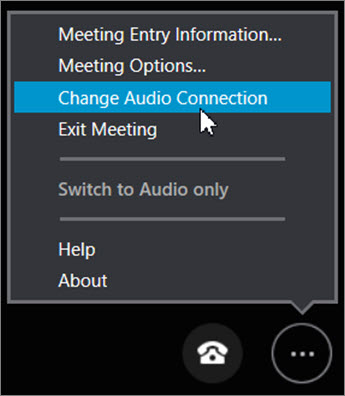

To disconnect the call, click the red button.Changing the audio settings in Skype for iPhone and iPad is as simple as following these steps:

Click the camera icon to stop sending video, and the microphone icon to mute audio. Don’t forget to un-mute when you want to chime in!Ĭall controls will only display during an audio or video call. It will improve the experience for everyone. If you hear someone pounding away on a keyboard (or other background noise), ask your participants to mute their mics. You may need to ask other participants to adjust their audio settings too.īest practice tip: Your mic should always be muted when you are not talking. If you hear yourself in a “loop” or echo, mute your microphone, then turn down your volume. Note: Using a headset helps keep feedback from impacting your conference call. Navigate to the Audio/Video tab to adjust the settings. To adjust microphone, speaker, and camera settings, click Skype for Business in the menu-bar, then Preferences. Note: many external (USB) cameras have integrated microphones. When you select a working microphone, you will see its level indicator moving. Go to Tools –> Audio Device Settings or Video Device Settings.įrom the Audio Device settings, select the microphone and speakers (integrated or headphone out port) you wish to use. For Windows 10:įind and click the gear icon from the main Skype windows. If you need to adjust these settings during a call, you may need to exit Skype for Business and re-enter the call for the changes to take effect. You should adjust and test these setting before you start a call. Please configure these settings before you start an audio or video call.Ĭonfiguration settings can be found from the Tools menu in Windows, and from the Audio / Video Preferences menu in MacOS. Configure audio and video on your computer to work with Skype for Business.Īll BSU and NTC laptops have integrated microphones, speakers, and a camera. Other devices (external cameras or headphones) can be connected too.


 0 kommentar(er)
0 kommentar(er)
